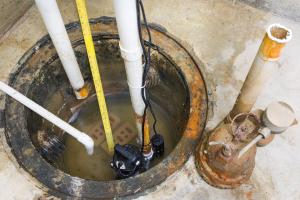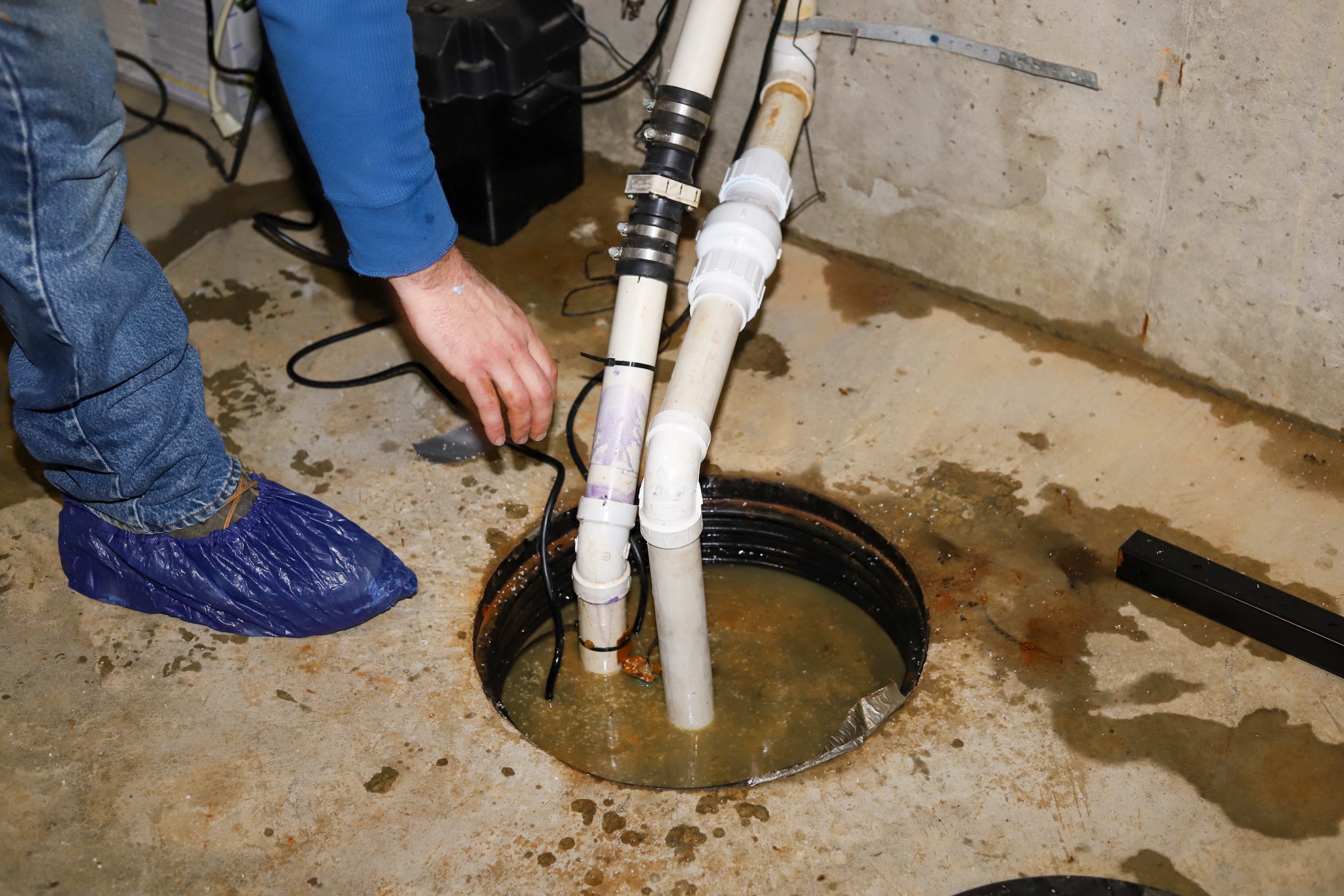Effective Tips for Caring for a Sump Pump
Effective Tips for Caring for a Sump Pump
Blog Article
On this page in the next paragraphs you will find more good quality content in regards to How To Effectively Clean A Sump Pump.

Sump pumps are important elements in several homes, particularly in locations prone to flooding or extreme wetness. They assist avoid water damage by effectively eliminating excess water from basements or crawl spaces. Nevertheless, like any other home appliance, sump pumps need regular upkeep to guarantee they work successfully when needed one of the most. Cleaning your sump pump is a vital part of its upkeep, and understanding just how to do it appropriately can save you from pricey repair services and prospective disasters.
Introduction
Maintaining a clean sump pump is crucial for its appropriate functioning and durability. Neglecting this important job can result in blockages, malfunctions, and inevitably, water damage to your home. Consequently, discovering exactly how to clean up a sump pump is vital for home owners that rely on these gadgets to maintain their basements completely dry and secured.
Understanding the Sump Pump
Prior to diving into the cleaning procedure, it's important to have a fundamental understanding of how a sump pump works. Usually mounted in a pit or container below the basement floor, a sump pump contains several essential parts, consisting of a pump, a float button, and a discharge pipe. When water gathers in the pit, the float button activates the pump, which then pumps the water out via the discharge pipeline, far from the structure's structure.
Indicators of a Dirty Sump Pump
Understanding when your sump pump needs cleaning is critical for avoiding prospective malfunctions. Some common signs that indicate an unclean sump pump consist of odd noises throughout operation, minimized water flow, and noticeable debris in the pit. If you notice any of these signs, it's necessary to cleanse your sump pump without delay to prevent any more issues.
Planning for Cleaning
Before you start cleansing your sump pump, it's important to take some security precautions. Begin by turning off the power to the pump to prevent any type of electric crashes. Furthermore, wear proper protective equipment, such as handwear covers and goggles, to shield on your own from dust, particles, and possible microorganisms.
Detailed Guide to Cleaning Up a Sump Pump
Shutting down the Power
Begin by separating the power supply to the sump pump to stop any crashes while cleaning.
Removing Particles and Dust
Utilize a bucket or an inside story to remove any visible debris, dust, or sediment from the sump pit. Dispose of the particles appropriately to avoid it from blocking the pump or the discharge pipeline.
Cleaning up the Pump and Drift Switch
As soon as the pit is free from particles, meticulously get rid of the pump from the pit. Examine the pump and the float button for any kind of indicators of damages or wear. Use a soft brush or cloth to clean up the surfaces and get rid of any kind of built up gunk.
Flushing the System
After cleaning up the pump and float button, purge the sump pit with clean water to remove any remaining dust or sediment. This will aid make certain that the pump operates efficiently and effectively.
Looking For Correct Functioning
Prior to reinstalling the pump, execute a quick test to ensure that the float switch activates the pump properly. Pour some water right into the sump pit and observe the pump's operation. If every little thing is functioning appropriately, you can rebuild the pump and reconnect the power supply.
Upkeep Tips to Keep Your Sump Pump Clean
Along with periodic cleaning, there are numerous upkeep tips you can follow to maintain your sump pump in optimal problem:
Conclusion
Cleansing your sump pump is a vital aspect of its maintenance and makes certain that it operates successfully when you require it one of the most. By following the actions described in this guide and incorporating regular maintenance right into your routine, you can prolong the life expectancy of your sump pump and secure your home from water damages.
6 STEPS ON HOW TO CLEAN A SUMP PUMP PROPERLY
UNDERSTANDING SUMP PUMPS
Your sump pump plays a crucial role in protecting your home by managing and removing excess water. It primarily functions as a “shield”, guarding your basement against the damaging effects of water accumulation. The pump is housed in a sump pit in the lowest part of your basement, and its job is to pump out any water that collects there.
During heavy rainfalls or when snow melts rapidly, water can infiltrate your basement, posing potential risks like flooding, structural damage, and harmful mold growth. Here, the sump pump springs into action, pumping out the intruding water and directing it away from your home.
SAFETY FIRST
Before cleaning, remember to prioritize safety. Disconnect the sump pump from the power source to prevent any accidental electric shocks. Also, wear sturdy gloves to protect your hands from any sharp or dirty components within the pump.
REMOVE THE SUMP PUMP
After ensuring your safety, the next step is to remove the sump pump from its pit. Doing this might require careful maneuvering as you don’t want to damage any pump components. Once removed, clean the sump pit to remove any accumulated debris or sludge.
INSPECT THE PUMP
Inspect the pump for any visible signs of wear or damage. Check the power cord, float switch, and impeller housing. If any components look worn out or damaged, consider replacing them to ensure optimal performance.
CLEAN THE PUMP
Thoroughly clean the pump with warm, soapy water. Make sure to rid it of any dirt, gravel, or other debris that might impede its performance. You can use a toothbrush to clean the small, hard-to-reach parts of the pump.
REINSTALL THE SUMP PUMP
Reinstall the pump into the sump pit Make sure it’s positioned correctly to remove the water effectively Once it’s back in place, reconnect it to the power source TEST THE PUMP
Finally, pour some water into the pit to ensure the pump works correctly. It should start automatically and begin pumping out the water; if it doesn’t, check the power source and the positioning of the pump.
Remember, while cleaning your sump pump is an essential part of home maintenance, hiring a professional plumber for a thorough inspection and cleaning at least once a year is also important. This will ensure that your pump is in optimal condition, ready to protect your home from potential water damage.
BEST PRACTICES FOR CLEANING SUMP PUMP DISCHARGE PIPES
Regular Inspection: Regularly inspect your discharge pipes, especially during heavy rainfall or snowmelt periods. Look for any signs of blockage or damage. Early detection of problems can prevent serious issues down the line. Periodic Cleaning: Over time, sediment and debris can accumulate in the discharge pipes, impeding the flow of water. Regular cleaning helps keep the pipes clear and functioning efficiently. You can use a high-pressure water jet to effectively clean the pipes. Insulation During Winter: In colder climates, discharge pipes can freeze, blocking the outflow of water. Protect your discharge pipes from freezing temperatures by insulating them with foam pipe insulation. This will ensure the sump pump can continue to discharge water even in freezing conditions. Proper Positioning: The discharge pipe should be positioned to direct water away from your home’s foundation. Improper positioning can lead to water seeping back into the basement. Ensure the pipe is long enough and angled correctly. Installation of a Check Valve: A check valve prevents water from flowing back into your sump pit after the pump has pushed it out. Installing a check valve helps maintain the efficiency of your sump pump and reduces the risk of flooding. Minimize Pipe Turns: Every curve or turn in the discharge pipe can decrease the efficiency of water flow. By minimizing turns and bends in your discharge pipe, you can increase the efficiency of your sump pump. https://www.fullspeedplumbing.com/how-to-clean-a-sump-pump-properly9999/

As a reader about How To Effectively Clean A Sump Pump, I was thinking sharing that excerpt was appropriate. Feel free to pause to promote this entry if you enjoyed it. Thanks a lot for your time. Please come by our site back soon.
Visit My Website Report this page